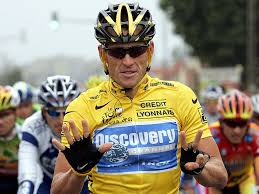Doping: a new era of ‘super athletes’ – Tom Saunders
Do we now live in a society where an Athlete can’t succeed without the added suspicion of some dishonesty? During the last couple years many athletes have been caught doping, the most notable recently, Maria Sharapova. However, regardless of the athlete’s status, performance enhancing drugs are banned, and significant consequences should be laid out in order to stamp out doping, as the International Tennis Fedaration has made clear with Sharapova’s two year ban (against which she is appealing).
Sharapova is just one of over 50 athletes recently found taking the banned substance meldonium, recently re-categorised as performance enhancing. To Sharapova’s credit, and unlike many of the other meldonium takers, she announced her ‘mistake’ before the ITF did so to save what integrity she had left. However, many leading sportsmen and sportswomens’ opinions, and my own, see Sharapova’s attempt at coming clean as merely an attempt to preserve her reputation and seek sympathy from her many global sponsors. Although the future looks bleak for the highest paid female athlete whose contracts with Nike and Porsche have been terminated.
Surprisingly the most worrying of the shocking news is the unsettling sympathetic attitudes of some of the leading figures in tennis. Steve Simon, head of the WTA, ( women’s tennis association) regarded Sharapova as ” a leader, who has shown great integrity. ” Similarly, former tennis player Martina Navratilova hoped ” it could be cleared up soon” as apparently it seemed an ‘honest mistake’. There is some validity to this argument as the banned substance was only put onto the WADA ( world anti-doping agency) list of banned substances in December, and Sharapova claimed not reading the letter sent by WADA on 22 December, once again throwing caution to the wind. Regardless of Sharapova’s ‘mistake’ and her authority, the ITF needs to stamp out doping and with more athletes failing drug tests, anti-doping agencies need to proceed with awarding a suitable punishment. Ultimately it is an athlete’s responsibility to pass these drug tests and with Sharapova failing her test, a glittering career could now be tarnished.

Performance enhancing drugs may improve an athlete’s performance and thus add entertainment value to world sporting events, but they also diminishes the value of sportsmanship. Interestingly a survey completed said 20% of high school students said that their decision to use anabolic steroids was influenced by professional athletes. Athletes ,whether they like it or not, are role models to millions of people. So whatever minute decision they make will have a big influence on younger generations. Not helped though as today any wrong step is inflated largely by any hungry media for stories. Lance Armstrong for example, stripped of his seven Tour de France titles, was portrayed by some as a villain, but the media may have largely influenced this view and in today’s society an athlete of such fame’s decisions would be put under the microscope.
Not only is doping considered morally wrong and damaging to the integrity of sport, but it is very dangerous. Anabolic steroids can cause heart disease, liver disease and infertility, not to mention the potential bacterial infections an athlete can get from unsterile injections. In the 1960 Olympics, a Danish cyclist by the name of Knud Enemark Jensen fell of his bike during a race and died later due to injuries he suffered. It was later found out this was the first case of an athlete dying due to the influence of drugs. Ever since agencies like WADA have formed so to reduce the risk of athletes being harmed by doping. However, unfortunately in today’s society anti doping agencies are in a losing battle against drug users. I find it bemusing that some athletes are prepared to risk their lives in order to prove themselves ‘the best’ at their chosen sport. However, with large sponsorship deals and with some athletes earning up to $400 000 a week, it’s easy to see why many are blinded by financial incentives.
The future looks bleak for numerous sports, tarred by the brush of doping. The future of sporting integrity is unpredictable, but for now, many athletes are corrupted by the pressures of media, sponsors and rising completion. Should we keep fighting against doping or should we embrace the inevitable future of persistent use of performance enhancing drugs?













2 comments